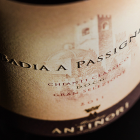Italy’s underrated wine regions represent a treasure trove for the adventuring wine lover.
Italy’s reputation for fine wine is legendary. It’s the biggest wine-producing nation in the world, with 20 individual wine regions spanning the country, each with protected geographical denominations and classifications. And unlike other countries, where grape growing is largely restricted to specific geographical pockets, wine in Italy is produced nearly everywhere.
For many, Italian wine is synonymous with Tuscany and Piedmont, and rightly so, since the Barolos, Barbarescos, Brunellos and Chiantis made here are world-renowned and attract huge crowds of visitors every year. But with such a wealth of wine regions – each with their own unique terroir – and with more than a thousand indigenous grapes, wine in Italy runs much deeper than its popular heavy-hitters. To be truly au fait with Italian wine, try a bottle from one of these under-the-radar regions.
Abruzzo
The crisp, clean mountain air of Abruzzo has given this southern region the nickname ‘the green lung of Italy’. Historically, the area was known for the bulk wine production of Montepulciano and Trebbiano, but wineries are working on changing that, largely through the native grape variety Pecorino. This light-skinned white grape was once thought to be extinct, but is gaining renewed popularity thanks to its ability to produce ripe and refreshing wines that pair extremely well with the region’s cheeses.
Calabria
Calabria – the ‘toe of the boot’ – has been producing wine for more than 2,500 years. It’s best known for a regional style called Ciro Rosso, made from the Gaglioppo grape. So highly regarded was this style of wine that it was presented to winners of the Olympic Games held in ancient times. A powerful, flavourful red with earthy notes and persistent fragrance, Ciro Rosso can be found on select wine lists at discerning Italian restaurants around the UK.
Campania
Situated in southern Italy to the east of Naples, Campania is predominantly home to the Aglianico grape. Aglianico has very high acidity and tannins, and is therefore sometimes referred to as the ‘Nebbiolo of the south”. It produces an earthy, hearty wine that goes well with fatty meats and spicy sauces, and like its Piedmont counterpart, has tremendous aging potential.
Emilia-Romagna
The fertile region of Emilia-Romagna spans nearly all of central Italy, and is one of the country’s oldest wine-producing regions. It’s perhaps best known for Lambrusco, a sparkling red made from the grape of the same name, first cultivated by the ancient Etruscans. The wine, depending on the producer, runs the gamut from dry to sweet with high acidity and notes of berry. It’s a very popular export, but it’s well worth seeking out more authentic local expressions, which are often much more refined than those found abroad.
Liguria
Liguria, situated in north-west Italy to the south of Piemonte, boasts an exceptionally beautiful coastal landscape next to the Tyrrhenian Sea. The eastern half of the region is home to the famous wine-producing Cinque Terre area, while the western side – known as Riveria Ligure di Ponente – is known for several highly distinctive wines. Rossese is the standout, and is unlike any other Italian red. It’s been likened to both Dolcetto and Valpolicella, and yet boasts its own marvellously complex character – well worth seeking out.
Le Marche
Located in the central region of Italy, with the Adriatic Sea to the east, Le Marche is home to five main provinces, each with their own unique terroir. From vast mountain ranges to blue-flag beaches, Le Marche is arguably the most diverse Italian wine region, so there’s lots to explore here. Verdicchio is popular with the locals – and increasingly so with wine drinkers throughout Europe – while the Bianchello grape produces a delicate fresh and dry wine that’s been a regional favourite since Roman times.
Puglia
Like Abruzzo, Puglia is often dismissed by serious oenophiles because of its history of bulk production. Indeed, the area produces massive quantities of wine, but its star is slowly rising as producers gradually turn their attention to quality, rather than quantity. Primitivo (akin to Zinfandel) and Negroamaro are popular varieties, but winemakers are increasingly experimenting with more interesting blends involving native grapes such as Nero di Troia and Aglianico, which are a world away from the region’s typical offerings.
Sardinia
Sardinia is the second largest island in the Mediterranean Sea, known for a number of underrated indigenous wine varietals, such as Vermentino, Cannonau and Mirto – a traditional liqueur made from macerated berries. Wines made from the white grape Vermentino are crisp, acidic and fruity and pair well with fish and shellfish. The island’s dominant red variety, Cannonau, is very similar to Chateauneuf-du-Pape, with robust fruit-driven wines and earthy flavours.
Sicily
Once best-known for the fortified wine Marsala, Sicily’s burgeoning wine industry is now largely focused on Nero d’Avola, a grape similar to Syrah in its ability to produce a hearty, fruity and sometimes tannic wine. More delicate wines made from grapes around Mount Etna, such as Nerello and Frappato, are also becoming popular.
Umbria
Bordering on Tuscany and right above Rome, Umbria is home to some of the most undervalued wines in Italy, from crisp, dry Grechetto to bold, ruby red Sagrantino. The region is a gastronomic wonderland, with Norcia – the ‘pork capital of Italy’ – to the north and woodlands full of bird game and truffles. Its wines are designed with feasting in mind.






